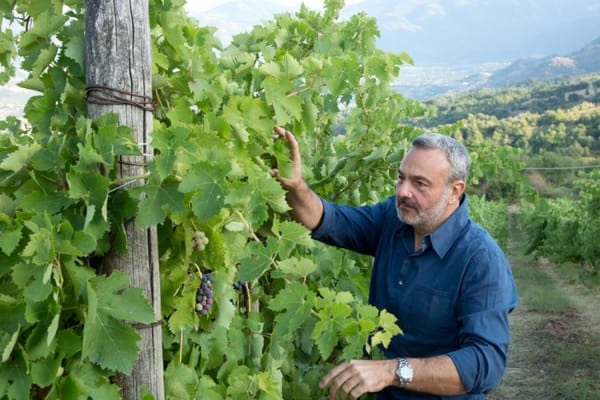Discovering Kazakhstan
Along the Silk Road, Between Nomadic Peoples and a Post-Soviet Revival

Along the Silk Road, Between Nomadic Peoples and a Post-Soviet Revival
In Kazakh, saying “I love you” translates to “you are my soul.” This expression is used interchangeably for a child, a spouse, or a grandmother. This reflects the deep-rooted spirituality of the Kazakh people—one that has endured despite decades of Soviet atheism.
A perfect example of the Kazakh soul is kurt, the most emblematic dish of this nomadic culture: small balls of fermented mare’s cheese, once chewed by travelers to stave off hunger while seeking shelter. During the Soviet pogroms, kurt became a symbol of freedom and solidarity. Mistaken for stones, these cheese balls were secretly thrown to prisoners in Soviet camps under the indifferent gaze of communist guards. It was a discreet yet powerful way to help others without facing punishment.
A Kazakh phrase for “I like you” is мен сені жақсы көремін, which translates to “I see you deeply, fully.” These nomadic peoples, accustomed to traveling with the wind on their swift horses, seem to look straight through you, as if understanding your very essence. Their sense of compassion—perhaps inherited from centuries of Silk Road trade—was shaped by shared hardships, fear, and the courage required for journeys that lasted years, often without landmarks or certainties. It was an adventure far less romantic than we might imagine today.
The History of Kazakhstan
This vast country, one of the largest in the world and completely landlocked, is home to Kazakh people with piercing ice-blue eyes. They speak of endless steppes and rugged mountain chains—the lesser-known side of the Himalayas. Being here feels like stepping into a timeless world, where boundless landscapes stretch to the horizon, majestic silences heighten the senses, and cobalt-blue skies frame towering peaks. This is Kazakhstan: a little-known yet geographically central nation.
For over 2,000 years, caravans crossed these lands along the Silk Road. The deserts and steppes between the Caspian Sea and China were traveled by nomads and merchants linking Central Asia and the Middle East, connecting China to Europe. In the 12th century, Genghis Khan’s Mongol invasion swept through, destroying earlier kingdoms but also establishing stability—the so-called Pax Mongolica—which allowed commercial cities to flourish. Later annexed by Russia, Kazakhstan became a Soviet Socialist Republic within the USSR in the 20th century before gaining independence in 1991.
What to See in Almaty and Astana, Kazakhstan’s Two Major Cities

Amidst the vast steppe, Kazakhstan is also home to thriving cities. The former capital, Almaty (also known as Alma-Ata), is famous for its Central Mosque, built on the site of the ancient Tatar Mosque. This architectural masterpiece is adorned with tiles and marble in classic Kazakh hues, with golden domes crowning its minaret towers. The city is also home to the Zenkov Cathedral, one of the tallest wooden cathedrals in the world, richly decorated in the Orthodox style.
Almaty, once called Verni (meaning "faithful" in Russian), is marked by Soviet-era brutalist architecture. Visitors can venture from the city to Medeu, a world-renowned ice-skating rink where hundreds of records have been set. For the adventurous, an 800-step climb or a cable car ride leads to the Shymbulak ski resort, offering breathtaking mountain scenery.
Astana, Kazakhstan’s new capital, is often called the "Dubai of the Steppe" due to its modern architecture, designed by world-famous architects. Notable landmarks include Ak Orda Palace (meaning "White Legion" in Kazakh), the official workplace of the President, a five-story monolithic concrete structure completed in 2004. Another iconic site is the Palace of Peace and Reconciliation, also known as the "Pyramid of Peace," which serves as a spiritual hub for various religions, including Islam, Christianity, Judaism, Buddhism, Hinduism, Taoism, and more.
Shymkent and Turkistan: A Journey Through History

Shymkent, Kazakhstan’s third-largest city, lies in the Turkistan region. Founded in the 12th century as a caravanserai to protect the nearby Silk Road trading hub of Sayram, it has long been a crossroads of cultures and commerce. The city was repeatedly destroyed—first by Genghis Khan, then by neighboring southern Khanates.
Shymkent is also the birthplace of Ahmed Yasawi, a poet and mystic who profoundly influenced the Turkic world. He was the first to compose poetry in a Turkic dialect rather than Persian or Arabic. Nearby, the ancient ruins of Otrar tell the tale of a city that resisted Genghis Khan’s wrath for months before being completely razed. Later rebuilt by Tamerlane, Otrar was where the legendary conqueror passed away in 1405, in the 14th-century Berdibek Palace, once the city's administrative center.
A must-visit is the Mausoleum of Khoja Ahmed Yasawi, commissioned by Tamerlane in 1389. Its double-domed structure, decorated with vibrant tiles, was Kazakhstan’s first UNESCO World Heritage Site. According to legend, Tamerlane struggled to complete its construction until a dream revealed that he must first build a monument at the site where the mystic Arystan Baba had died. The mausoleum features a grand central arch, a monumental façade with minarets, and two imposing domes.
Another intriguing pilgrimage site is the Aisha Bibi Mausoleum (11th or 12th century), dedicated to a noblewoman and located along the Silk Road. According to legend, a ruler built it for his beloved fiancée, Aisha-Bibi, daughter of the Sufi poet Khakim-Ata. This site is especially unique, as female saints are rarely venerated in the Islamic world.
The Surreal Landscapes of Charyn Canyon

Just three hours by bus from Almaty, Charyn Canyon is a geological wonder on the borders of China and Kyrgyzstan. The name Charyn means “precipice,” and this breathtaking canyon stretches 154 kilometers with cliffs towering up to 300 meters high. It is the second-largest canyon in the world, after the Grand Canyon.
Once home to the elusive red wolves—stronger than their gray counterparts but unseen for 40 years—the park still boasts over 70 animal species, including royal falcons, eagles, and wildcats.
The most iconic viewpoint is the Valley of Castles (Airakty Mangystau), where ancient seabed formations have been sculpted by wind, water, and time into jagged peaks and dramatic ridges. Each mountain resembles a fortress, its edges forming turret-like structures that earned it the name “Valley of Castles.” The name was coined by Taras Shevchenko, a Ukrainian writer and poet who was exiled to Mangystau in the mid-19th century and sketched the first illustrations of these peaks.
Local folklore whispers that, at sunset, the wind howling through the canyon carries the laughter of witches—a haunting yet mesmerizing echo of Kazakhstan’s untamed spirit.





